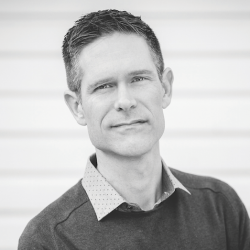
College degree freshly in hand, Alexis moved from the Midwest to Washington, DC, convinced she was going to change the world. Like so many young professionals, she was drawn to our nation’s capital by its high concentration of nonprofit organizations and the chance to influence national and global policy.
“Doing good” was at the top of her to-do list.
Finding a church was not.
During Alexis’s first weekend in town, she heard music coming from a festival in a nearby park and decided to check it out. She strolled through the grass, thrilled to find dozens of community organizations offering opportunities to make a difference.
Alexis was particularly drawn to a simple table with a large banner that read, “Foster the City.” “Foster the City’s aim,” the two young adult volunteers shared, “is to reverse the foster care wait list in our city. We’re going to line up more families who want to adopt than the hundreds in DC’s foster care system who need a home. It’s a huge problem and a huge goal, but we’ve been making steady progress.”
Alexis was ready to sign up and help however she could. She wasn’t in a position to adopt, but she was willing to donate and share the need with others. As the three continued their conversation, Alexis eventually learned that these volunteers weren’t just part of a nonprofit organization—they were part of a church: The District Church, led by Fuller grads Aaron Graham (DMiss ’13) and Justin Fung (MA ’09).
This new church plant lived to be “a church for the city”—that was actually their motto. The congregation coordinated not only Foster the City in DC but also several other social justice initiatives in the surrounding neighborhoods. The more Alexis asked about the activities and overall spirit of the church, the more she felt like this was a church she could imagine joining. While finding a church was nowhere on Alexis’s list initially, The District Church leaped to the top because of how it incarnated Jesus in its community.
One year later, as the Fuller Youth Institute’s research team visited her church, Alexis was deeply involved as a worship leader and small group member. When asked what she loved about her congregation, Alexis reiterated its involvement in the community. “I love that I met these people at a festival,” she said. “I didn’t need to be looking for Jesus or a church to find them. They were out there doing their thing as opposed to a lot of churches that try to get you to come to their events in the church building.”
The church’s primary focus at the festival was not to promote their Sunday service but to make their city a better place. Alexis continued, “Everyone in our city wants to change the world, but this church makes that tangible in a manner I have never seen before in a church. It teaches you how to apply your faith to the culture so you can interact with the world as God intends.”
The District Church sacrifices neither depth nor theology as it positively engages with culture and makes a difference in the world. Alexis is hooked, and so are hundreds of young professionals and adults. Like many others in our recent study, this church carries out its life and ministry in a way that speaks to young people.
THE DISCOURAGING NEWS ABOUT CHURCHES IN AMERICA
You may have heard some bad news about the church in America. The truth is that most churches are not growing, and they aren’t getting any younger.
According to an extensive survey by the Pew Research Center, the share of adults in the United States who identify as Christians fell from 78 to 71 percent between 2007 and 2014. The corresponding increase in those who identify as “religiously unaffiliated” (meaning atheist, agnostic, or “nothing in particular”) jumped by almost seven points, from just over 16 to 23 percent.1 The more our research team explored, we also discovered that no major Christian tradition is growing in the United States today.2
What’s more, churches tend to skew old. While young adults ages 18–29 make up 17 percent of the US adult population, they represent less than 10 percent of churchgoers.3
The data is clear that shrinking and aging are the default for most American congregations today. But that’s not the way it has to be. And it’s not happening in every church. Four years ago, we set out to learn from churches that were bucking this trend.
FULLER’S RESEARCH ON “BRIGHT SPOT” CHURCHES
The team at the Fuller Youth Institute spent the past four years studying The District Church and over 250 other congregations of diverse sizes, ethnicities, and geographic regions that are unlocking the potential of teenagers and emerging adults. Using an exemplar research method, these evangelical, mainline, Roman Catholic, and nondenominational churches were identified by 35 nominators and subsequently narrowed down in three stages of research.4 It’s been one of the largest and most collaborative studies ever conducted on the topic, involving over 20 denominations, 25 expert advisors, 1,500 research participants, and 10,000 hours of staff research time. Nearly 30 interdisciplinary Fuller faculty members participated in the project in some way, along with over 45 Fuller student and alumni research assistants from all three of Fuller’s schools.
Through this study our team has discovered the shared core commitments of congregations that are not aging and shrinking, but are growing, and growing young. (See ChurchesGrowingYoung.org for more details regarding these six core commitments and other research findings.) Like us, you might be surprised not only by what these churches have done, but also by what they haven’t done. In fact, they’re busting some of the greatest myths commonly held as essential to reaching young people.
A FEW SURPRISES ABOUT WHAT CHURCHES DON’T NEED TO GROW YOUNG
When you hear about a church like District, you might assume this kind of growth is reserved for newer church plants and young, hip leaders. While some churches in our study held this profile, the vast majority did not. According to our research, there’s a list of surprising factors we didn’t find common among churches in our study that engage young people well. Here are a few of them:
A precise size. While we all know leaders who advocate for small churches or large ones, we saw no statistical relationship between church size (or budget size) and effectiveness.
An exact age. We learned just as much and recorded just as much life change in churches over a century old as in churches barely five years old. When it comes to churches that grow young, there is no age discrimination.
A particular denomination. When we started our study, we wondered if the churches that rose to the top would skew toward particular denominational or nondenominational leanings. While it’s true that some denominations are shrinking or aging faster than average, God is working in a stunning variety of churches.
A “contemporary” worship service. It’s not that worship style is unimportant; it’s that there is no one “right” worship style for teenagers and emerging adults. While the churches we visited were likely to prefer modern worship in some or all of their worship contexts, they didn’t depend on that alone as a magnet to draw young people.
A big, modern building. Some of the congregations that are most effective with young people have new, state-of-the-art facilities. However, the majority of the churches we studied gather in decent but not spectacular spaces. Some don’t own their facilities and are creatively meeting in local schools, community centers, and living rooms. For teenagers and young adults, feeling at home transcends any building.
Reflecting on the factors that are not necessary in churches that engage young people well, our team was encouraged by the fact that most any church can better engage young people. The shifts that are needed to do so are not quick and easy, but our research does help shed light on the best places to focus time and energy.
A COMPELLING VISION TO BE THE BEST NEIGHBORS
The story of The District Church highlights one of those important shifts in congregational culture, which is that churches growing young strive to be the best neighbors, both locally and globally. They wisely maintain a delicate balance as they interact with our culture and world. On the one hand, they do not simply mimic the surrounding culture, indiscriminately patterning their lives and activities after what they see around them. On the other hand, they are not so different or separate from the world that they lose their ability to relate.
Instead, these churches recognize the careful dance that values both fidelity to Scripture’s commands for holiness as well as knowing and graciously loving their neighbors. This dance affects how they serve, pursue justice, help teenagers and emerging adults find their calling, interact with popular culture, and respond to heated cultural issues. Much more than developing detailed policies or releasing theological position papers, these churches train and infuse their young people with an integrated discipleship that enables them to thrive in our complex world.
A number of young adults from The District Church explained that in the often-polarized culture of DC, they’ve learned that as Christians they need to earn the right to be heard before assuming others will want to listen. We continued to hear this theme from young people in other churches, often referencing Jesus’ teaching on what it means to be a neighbor. Consistently demonstrated in both our statistical data and experience on the ground, eventually we began to identify this desire among exemplary churches as “being the best neighbors.” Over time it became clear that this characteristic is part of a cluster of commitments held in common by churches growing young.
As you might expect, we found that offering young people a thoughtful path to neighboring well is anything but easy, even in exemplary churches. When leaders in our study identified the biggest challenges their church faces in ministering to teenagers and emerging adults, one out of three named challenges navigating culture. The most frequently named cultural obstacles include the difficulty of keeping their church relevant and the pressure on young people to conform to popular cultural norms.
In the midst of these struggles, young people often lead the way forward. When interview participants in our study were asked what makes their church effective with young people, nearly 60 percent named service practices, missional practices, or generally being outward oriented. Further, when we posed the question “What is a practice in your congregation that indicates commitment from or growth in young people?” to leaders, nearly 70 percent named ways young people serve.
MORE CONVERSATIONS, FEWER IMMEDIATE CONCLUSIONS
While the path to neighboring well is not always clear, teenagers and emerging adults consistently described how much they care about their church’s process or journey for arriving at particular beliefs, positions, and statements. Especially when it comes to heated cultural issues like politics, interreligious dialogue, or homosexuality, a church’s predetermined agenda can become hard for young people to stomach. When churches seem closed to dialogue, young people often look elsewhere for more palatable conversations about issues that matter most to them.
While the churches in our study that neighbor well are anything but theological lightweights, they often demonstrate a generous spirit in the face of differing opinions. When interview participants describe their church, they are eight times more likely to mention the diversity of beliefs in their church than the similarities.
No matter where churches growing young fall on the theological spectrum, they place emphasis on essential beliefs that can be shared rather than exaggerating various differences. In this way, those both inside and outside the church whose convictions do not match the church’s feel welcome to join the conversation.
Throughout our study we heard from several young people who do not completely align with their church’s stance on one or more controversial issues, but nevertheless remain part of the church because they respect the process by which decisions are made. One 18-year-old from Minnesota shared, “We talk about the big social issues . . . we definitely engage those. But we don’t tell people what to think about them. And that is what I really love. I have never felt awkward asking one of the leaders, ‘What do you think about this?’ because I know they’re not going to tell me exactly what to think. Instead, they engage me in conversation. And then through that, we can derive together the ways that we should live out our beliefs.”
Respecting the journey seems particularly vital when navigating one of the most fiercely contested topics in US churches today: sexual identity and gay marriage. While the churches in our study landed on all sides of these complex issues, they were united in their commitment to informed, respectful, and thoughtful dialogue. For example, one church began every discussion on same-sex questions with a reminder of every person’s common need for the grace of God. Another church publicly asked forgiveness from the same-sex community for their past quick judgments and lack of grace, emphasizing the God who is bigger than any conflict or debate.
Furthermore, leaders of churches that neighbor well are sensitive to making a decision, or taking a particular theological stance, that is perceived as shutting down discussion. Rather than make decisions in a leadership vacuum, they recognize the tensions that swirl around these issues, especially for young people who may interact every day with those who identify as LGBTQ, or who may identify as having LGBTQ tendencies or attraction themselves. These church leaders avoid making blanket statements and instead try to honor all people involved as created in God’s image. They make space for safe and honest dialogue so that everyone—both young and old—can share their questions, beliefs, and experiences.
As Graham shares, living out the church’s motto “for the city” must be a holistic effort. The church routinely asks questions like Do we know our neighbors? and Are we aware of what’s happening in our neighborhoods? They wonder what their “shalom index” looks like—the tangible impact of the church on the city’s crime rate, church attendance, and other measures of well being. According to District leadership, an ideal proof of their effectiveness would be a headline in the Washington Post that reads, “Churches in DC Unite to Solve the Foster Care Crisis.”
WHY CHURCH?
Many young people are finding that kind of vision worth joining. In light of rapid and complex cultural shifts, both our research and our experience reveal that an increasing number of young people today are asking, “Why should I go to church?” They lament that it feels increasingly irrelevant, unwilling to change, and perhaps even distant from what Jesus intended. Like Alexis, many of these young people initially conclude that if they really want to make a difference in the world, their time may be best spent else- where. But The District Church and hundreds of other congregations nationwide hope to turn this tide and offer a compel- ling vision for what a vibrant, transformative faith community can be and do.
On the final day of our weekend visit to The District Church, Aaron Graham delivered a passionate sermon entitled “Why Church?” In it, he recounted why their church was founded and what it means to be a church “for the city.” While the big lie that many in DC believe is that they can change the world on their own, Graham argued that changing the world is best attempted through the defining, sustainable, Spirit-empowered work of a community of believers.
Based on the nodding heads of Alexis and hundreds of other young adults in the congregation, it felt like he had struck a chord.
We’re inclined to agree.




